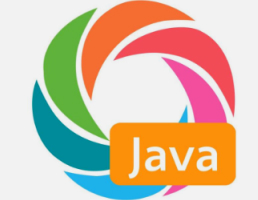在Java开发工作中,有很多时候我们需要将不同的两个对象实例进行属性复制,从而基于源对象的属性信息进行后续操作,而不改变源对象的属性信息。这两个对象实例有可能是同一个类的两个实例,也可能是不同类的两个实例,但是他们的属相名称相同。例如DO、DTO、VO、DAO等,这些实体的意义请查看DDD中分层架构。本文主要介绍几种对象拷贝的方法
1. 对象拷贝
对象拷贝分为深拷贝和浅拷贝。根据使用场景进行不同选择。在Java中,数据类型分为值类型(基本数据类型)和引用类型,值类型包括int、double、byte、boolean、char等简单数据类型,引用类型包括类、接口、数组等复杂类型。
深度拷贝和浅度拷贝的主要区别在于是否支持引用类型的属性拷贝,本文将探讨目前使用较多的几种对象拷贝的方案,以及其是否支持深拷贝和性能对比。
2. BeanUtils
2.1 apache的BeanUtils方案
使用org.apache.commons.beanutils.BeanUtils进行对象深入复制时候,主要通过向BeanUtils框架注入新的类型转换器,因为默认情况下,BeanUtils对复杂对象的复制是引用,例如:
public static void beanUtilsTest() throws Exception {
// 注册转化器
BeanUtilsBean.getInstance().getConvertUtils().register(new ArbitrationConvert(), ArbitrationDO.class);
Wrapper wrapper = new Wrapper();
wrapper.setName("copy");
wrapper.setNameDesc("copy complex object!");
wrapper.setArbitration(newArbitrationDO());
Wrapper dest = new Wrapper();
// 对象复制
BeanUtils.copyProperties(dest, wrapper);
// 属性验证
wrapper.getArbitration().setBizId("1");
System.out.println(wrapper.getArbitration() == dest.getArbitration());
System.out.println(wrapper.getArbitration().getBizId().equals(dest.getArbitration().getBizId()));
}
public class ArbitrationConvert implements Converter {
@Override
public <T> T convert(Class<T> type, Object value) {
if (ArbitrationDO.class.equals(type)) {
try {
return type.cast(BeanUtils.cloneBean(value));
} catch (Exception e) {
e.printStackTrace();
}
}
return null;
}
}
可以发现,使用org.apache.commons.beanutils.BeanUtils复制引用时,主和源的引用为同一个,即改变了主的引用属性会影响到源的引用,所以这是一种浅拷贝。
需要注意的是,apache的BeanUtils中,以下类型如果为空,会报错(org.apache.commons.beanutils.ConversionException: No value specified for *)
/**
* Register the converters for other types.
* </p>
* This method registers the following converters:
* <ul>
* <li>Class.class - {@link ClassConverter}
* <li>java.util.Date.class - {@link DateConverter}
* <li>java.util.Calendar.class - {@link CalendarConverter}
* <li>File.class - {@link FileConverter}
* <li>java.sql.Date.class - {@link SqlDateConverter}
* <li>java.sql.Time.class - {@link SqlTimeConverter}
* <li>java.sql.Timestamp.class - {@link SqlTimestampConverter}
* <li>URL.class - {@link URLConverter}
* </ul>
* @param throwException <code>true if the converters should
* throw an exception when a conversion error occurs, otherwise <code>
* <code>false if a default value should be used.
*/
private void registerOther(boolean throwException) {
register(Class.class, throwException ? new ClassConverter() : new ClassConverter(null));
register(java.util.Date.class, throwException ? new DateConverter() : new DateConverter(null));
register(Calendar.class, throwException ? new CalendarConverter() : new CalendarConverter(null));
register(File.class, throwException ? new FileConverter() : new FileConverter(null));
register(java.sql.Date.class, throwException ? new SqlDateConverter() : new SqlDateConverter(null));
register(java.sql.Time.class, throwException ? new SqlTimeConverter() : new SqlTimeConverter(null));
register(Timestamp.class, throwException ? new SqlTimestampConverter() : new SqlTimestampConverter(null));
register(URL.class, throwException ? new URLConverter() : new URLConverter(null));
}
当遇到这种问题是,可以手动将类型转换器注册进去,比如data类型:
public class BeanUtilEx extends BeanUtils {
private static Map cache = new HashMap();
private static Log logger = LogFactory.getFactory().getInstance(BeanUtilEx.class);
private BeanUtilEx() {
}
static {
// 注册sql.date的转换器,即允许BeanUtils.copyProperties时的源目标的sql类型的值允许为空
ConvertUtils.register(new org.apache.commons.beanutils.converters.SqlDateConverter(null), java.sql.Date.class);
ConvertUtils.register(new org.apache.commons.beanutils.converters.SqlDateConverter(null), java.util.Date.class);
ConvertUtils.register(new org.apache.commons.beanutils.converters.SqlTimestampConverter(null), java.sql.Timestamp.class);
// 注册util.date的转换器,即允许BeanUtils.copyProperties时的源目标的util类型的值允许为空
}
public static void copyProperties(Object target, Object source)
throws InvocationTargetException, IllegalAccessException {
// 支持对日期copy
org.apache.commons.beanutils.BeanUtils.copyProperties(target, source);
}
2.2 apache的PropertyUtils方案
PropertyUtils的copyProperties()方法几乎与BeanUtils.copyProperties()相同,主要的区别在于后者提供类型转换功能,即发现两个JavaBean的同名属性为不同类型时,在支持的数据类型范围内进行转换,PropertyUtils不支持这个功能,所以说BeanUtils使用更普遍一点,犯错的风险更低一点。而且它仍然属于浅拷贝。
Apache提供了 SerializationUtils.clone(T),T对象需要实现 Serializable 接口,他属于深克隆。
2.3 spring的BeanUtils方案
Spring中的BeanUtils,其中实现的方式很简单,就是对两个对象中相同名字的属性进行简单get/set,仅检查属性的可访问性。
public static void copyProperties(Object source, Object target) throws BeansException {
copyProperties(source, target, (Class)null, (String[])null);
}
public static void copyProperties(Object source, Object target, Class<?> editable) throws BeansException {
copyProperties(source, target, editable, (String[])null);
}
public static void copyProperties(Object source, Object target, String... ignoreProperties) throws BeansException {
copyProperties(source, target, (Class)null, ignoreProperties);
}
private static void copyProperties(Object source, Object target, Class<?> editable, String... ignoreProperties) throws BeansException {
Assert.notNull(source, "Source must not be null");
Assert.notNull(target, "Target must not be null");
Class actualEditable = target.getClass();
if(editable != null) {
if(!editable.isInstance(target)) {
throw new IllegalArgumentException("Target class [" + target.getClass().getName() + "] not assignable to Editable class [" + editable.getName() + "]");
}
actualEditable = editable;
}
PropertyDescriptor[] targetPds = getPropertyDescriptors(actualEditable);
List ignoreList = ignoreProperties != null?Arrays.asList(ignoreProperties):null;
PropertyDescriptor[] var7 = targetPds;
int var8 = targetPds.length;
for(int var9 = 0; var9 < var8; ++var9) {
PropertyDescriptor targetPd = var7[var9];
Method writeMethod = targetPd.getWriteMethod();
if(writeMethod != null && (ignoreList == null || !ignoreList.contains(targetPd.getName()))) {
PropertyDescriptor sourcePd = getPropertyDescriptor(source.getClass(), targetPd.getName());
if(sourcePd != null) {
Method readMethod = sourcePd.getReadMethod();
if(readMethod != null && ClassUtils.isAssignable(writeMethod.getParameterTypes()[0], readMethod.getReturnType())) {
try {
if(!Modifier.isPublic(readMethod.getDeclaringClass().getModifiers())) {
readMethod.setAccessible(true);
}
Object ex = readMethod.invoke(source, new Object[0]);
if(!Modifier.isPublic(writeMethod.getDeclaringClass().getModifiers())) {
writeMethod.setAccessible(true);
}
writeMethod.invoke(target, new Object[]{ex});
} catch (Throwable var15) {
throw new FatalBeanException("Could not copy property \'" + targetPd.getName() + "\' from source to target", var15);
}
}
}
}
}
}
可以看到, 成员变量赋值是基于目标对象的成员列表, 并且会跳过ignore的以及在源对象中不存在的, 所以这个方法是安全的, 不会因为两个对象之间的结构差异导致错误, 但是必须保证同名的两个成员变量类型相同.
3. dozer
Dozer(http://dozer.sourceforge.net/)能够实现深拷贝。Dozer是基于反射来实现对象拷贝,反射调用set/get 或者是直接对成员变量赋值 。 该方式通过invoke执行赋值,实现时一般会采用beanutil, Javassist等开源库。
简单引用网上的例子,大多都是基于xml的配置,具体请查看其它Blog:
package com.maven.demo;
import java.util.HashMap;
import java.util.Map;
import org.dozer.DozerBeanMapper;
import org.junit.Test;
import static org.junit.Assert.assertEquals;
public class Demo{
/**
* map->bean
*/
@Test
public void testDozer1() {
Map<String,Object> map = new HashMap();
map.put("id", 10000L);
map.put("name", "小兵");
map.put("description", "帅气逼人");
DozerBeanMapper mapper = new DozerBeanMapper();
ProductVO product = mapper.map(map, ProductVO.class);
assertEquals("小兵",product.getName());
assertEquals("帅气逼人",product.getDescription());
assertEquals(Long.valueOf("10000"), product.getId());
}
/**
* VO --> Entity (不同的实体之间,不同的属性字段进行复制)
*/
@Test
public void testDozer2(){
ProductVO product = new ProductVO();
product.setId(10001L);
product.setName("xiaobing");
product.setDescription("酷毙了");
DozerBeanMapper mapper = new DozerBeanMapper();
ProductEntity productEntity = mapper.map(product, ProductEntity.class);
assertEquals("xiaobing",productEntity.getProductName());
}
}
4. MapStrcut
MapStrcut属于编译期的对象复制方案,它能够动态生成set/get代码的class文件 ,在运行时直接调用该class文件。该方式实际上扔会存在set/get代码,只是不需要自己写了。
@Mapper(componentModel = "spring")
public interface MonitorAppGroupIdcDTOMapper {
MonitorAppGroupIdcDTOMapper MAPPER = Mappers.getMapper(MonitorAppGroupIdcDTOMapper.class);
void mapping(MonitorAppGroupIdcDTO source, @MappingTarget MonitorAppGroupIdcDTO dest);
}
5. 自定义Pojoconvert
public J copyPojo( P src, J des) throws
NoSuchMethodException,SecurityException, IllegalAccessException, IllegalArgumentException,
InvocationTargetException {
if(src == null || des==null){
return null;
}
String name = null ;
String sufix = null;
Class<?> cls = des.getClass() ;
Method[] methods = cls.getMethods();
for(Method m: methods){
name = m.getName();
if(name!=null && name.startsWith("set") && m.getParameterTypes().length==1){
sufix = name.substring(3);
m.getParameterTypes() ;
Method getM = cls.getMethod("get"+sufix);
m.invoke(des, getM.invoke(src));
}
}
return des ;
}
没有那么多验证,不是很安全但是性能不错。
6. BeanCopier
@Test
public void test_convert_entity_to_model_performance_use_beancopier(){
List<ShopCouponEntity> entityList = ...
long start = System.currentTimeMillis();
BeanCopier b = BeanCopier.create(ShopCouponEntity.class, ShopCouponModel.class, false);
List<ShopCouponModel> modelList = new ArrayList<>();
for (ShopCouponEntity src : entityList) {
ShopCouponModel dest = new ShopCouponModel();
b.copy(src, dest, null);
modelList.add(dest);
}
System.out.printf("BeanCopier took time: %d(ms)%n",System.currentTimeMillis() - start);
}
可以通过缓存BeanCopier的实例来提高性能。
BeanCopier b = getFromCache(sourceClass,targetClass); //从缓存中取
long start = System.currentTimeMillis();
List<ShopCouponModel> modelList = new ArrayList<>();
for (ShopCouponEntity src : entityList) {
ShopCouponModel dest = new ShopCouponModel();
b.copy(src, dest, null);
modelList.add(dest);
}
7. fastjson和GSON
使用fastjson和GSON主要是通过对象json序列化和反序列化来完成对象复制,这里只是提供一种不一样的对象拷贝的思路,例子略。
8. 性能
对两种BeanUtils、Gson以及自定义Pojoconvert测试了性能
NewNovelMode des = null ;
NewNovelMode ori = buildModel();
Gson gson = new Gson();
int count = 100000;
//org.springframework.beans.BeanUtils.copyProperties
long s = System.currentTimeMillis();
for(int i=0;i<count;i++){
des = new NewNovelMode();
org.springframework.beans.BeanUtils.copyProperties(ori, des);
}
System.out.println("springframework BeanUtils cost:"+(System.currentTimeMillis() - s));
// System.out.println(new Gson().toJson(des));
//org.apache.commons.beanutils.BeanUtils
s = System.currentTimeMillis();
for(int i=0;i<count;i++){
des = new NewNovelMode();
org.apache.commons.beanutils.BeanUtils.copyProperties(des, ori);
}
System.out.println("apache BeanUtils cost:"+(System.currentTimeMillis() - s));
// System.out.println(new Gson().toJson(des));
//gson转换
s = System.currentTimeMillis();
for(int i=0;i<count;i++){
des = gson.fromJson(gson.toJson(ori), NewNovelMode.class);
}
System.out.println("gson cost:"+(System.currentTimeMillis() - s));
// System.out.println(new Gson().toJson(des));
//Pojo转换类
s = System.currentTimeMillis();
PojoUtils<NewNovelMode, NewNovelMode> pojoUtils = new PojoUtils<NewNovelMode, NewNovelMode>();
for(int i=0;i<count;i++){
des = new NewNovelMode();
pojoUtils.copyPojo(ori,des);
}
System.out.println("Pojoconvert cost:"+(System.currentTimeMillis() - s));
// System.out.println(new Gson().toJson(des));
结果就不贴出来了,在这里总结一下
Spring的BeanUtils比较稳定,不会因为量大了,耗时明显增加,但其实基准耗时比较长;apache的BeanUtils稳定性与效率都不行,不可取;Gson,因为做两个gson转换,所以正常项目中,可能耗时会更少一些;PojoUtils稳定不如spring,但是总耗时优势明显,原因是它只是根据项目的需求,实现的简单的转换模板,这个代码在其它的几个工具类均有。
而在网上的其他Blog中(参见Reference),对Apache的BeanUtils、PropertyUtils和CGLIB的BeanCopier作了性能测试。
测试结果:
性能对比: BeanCopier > BeanUtils. 其中BeanCopier的性能高出另外两个100数量级。
综上推荐使用:
- BeanUtils(简单,易用)
- BeanCopier(加入缓存后和手工set的性能接近)
- Dozer(深拷贝)
- fastjson(特定场景下使用)
Reference:
- http://blog.csdn.net/yemou_blog/article/details/50292237
- http://blog.csdn.net/caokai1992/article/details/50506252
- http://guying1028.iteye.com/blog/996869
- http://www.cnblogs.com/baizhanshi/p/6096810.html
- http://www.voidcn.com/blog/xtqve/article/p-4829829.html
- http://blog.csdn.net/paincupid/article/details/71247255
- https://segmentfault.com/a/1190000006922799





